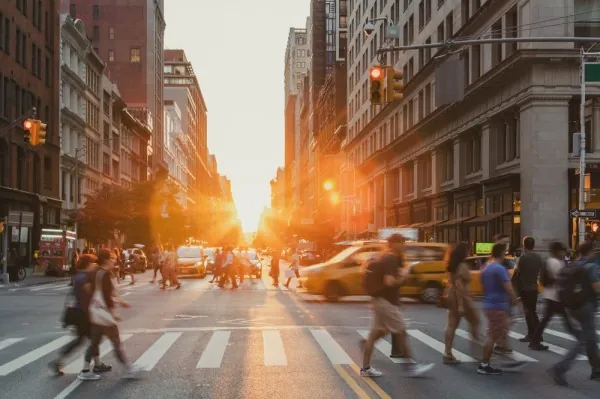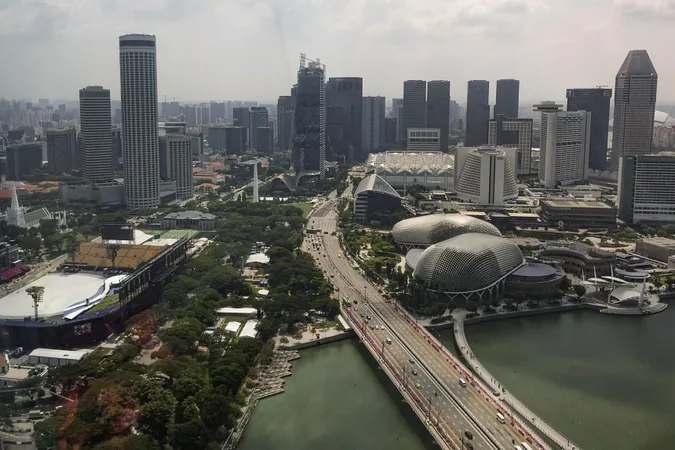
Shocking Study Reveals How COVID-19 Transformed Urban Mobility Across the Globe!
2024-11-20
Author: Daniel
Study Overview
A groundbreaking study published in The Lancet Public Health has unveiled the dramatic changes in mobility patterns caused by the COVID-19 pandemic, impacting how we walk, drive, and utilize public transit. Conducted by a team of international researchers from the Brown School at Washington University in St. Louis, this research analyzed data from nearly 300 cities worldwide, providing critical insights into how urban transportation habits have evolved amid the health crisis.
Key Insights
This global pandemic became a unique ‘natural experiment,’ allowing us to observe real-time shifts in urban mobility,” said Rodrigo Reis, a professor at the Brown School and co-author of the study titled, "City Mobility Patterns During the COVID-19 Pandemic: Analysis of a Global Natural Experiment."
The research team employed Apple’s Mobility Trends Reports, gathering data from 296 cities from January 2020 to February 2022. The results were striking: during the initial lockdowns in 2020, there was a steep decline in all transportation forms. However, by April 2020, mobility began to recover at varying rates depending on a city’s density, the severity of the pandemic, and overall economic conditions.
Implications for Urban Planning
In light of future pandemics, our findings underline the essential roles that sectors like transport planning, urban design, and health care must play in addressing both current and emerging public health challenges. It is crucial to integrate and coordinate policies that promote healthy urban planning practices—including active transportation options—to build resilience in our cities against future pandemics.”
Mobility Trends
Interestingly, the study found that cities with lower populations rebounded more swiftly in driving and walking activities, while densely populated urban areas that heavily relied on public transit faced a slower recovery. Moreover, cities experiencing higher infection rates saw a notable increase in driving and walking, contrasting with those with fewer cases that leaned more on public transportation.
Research on Policies
In an effort to guide future urban planning, the researchers also evaluated over 500 global policies related to mobility and active transportation. These insights aim to foster healthier and more resilient cities in the wake of COVID-19's impact.
Benefits of Active Transportation
Reis emphasized the myriad benefits of active transportation, stating, “Walking, cycling, and using public transportation promote not just health but also economic, environmental, and social well-being. They effectively tackle critical urban challenges—including traffic safety, road congestion, and air pollution—while reducing the risks of chronic diseases and enhancing overall community vitality.”
Final Thoughts
As cities navigate post-pandemic recovery, the findings shed light on the need for innovative urban planning that prioritizes sustainable mobility choices, making our urban environments healthier and more resilient for generations to come. Will city leaders heed these lessons, or will another health crisis hit unprepared? Stay tuned!



 Brasil (PT)
Brasil (PT)
 Canada (EN)
Canada (EN)
 Chile (ES)
Chile (ES)
 España (ES)
España (ES)
 France (FR)
France (FR)
 Hong Kong (EN)
Hong Kong (EN)
 Italia (IT)
Italia (IT)
 日本 (JA)
日本 (JA)
 Magyarország (HU)
Magyarország (HU)
 Norge (NO)
Norge (NO)
 Polska (PL)
Polska (PL)
 Schweiz (DE)
Schweiz (DE)
 Singapore (EN)
Singapore (EN)
 Sverige (SV)
Sverige (SV)
 Suomi (FI)
Suomi (FI)
 Türkiye (TR)
Türkiye (TR)